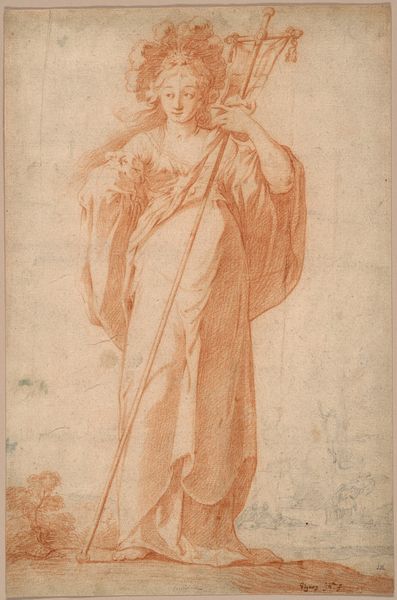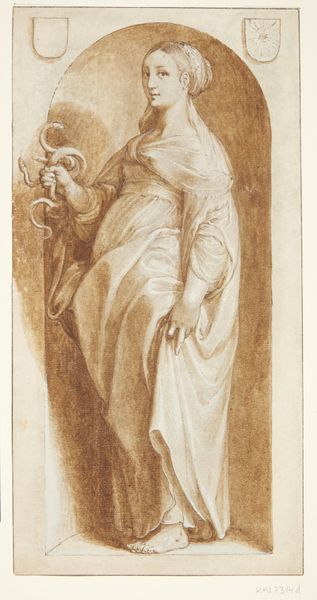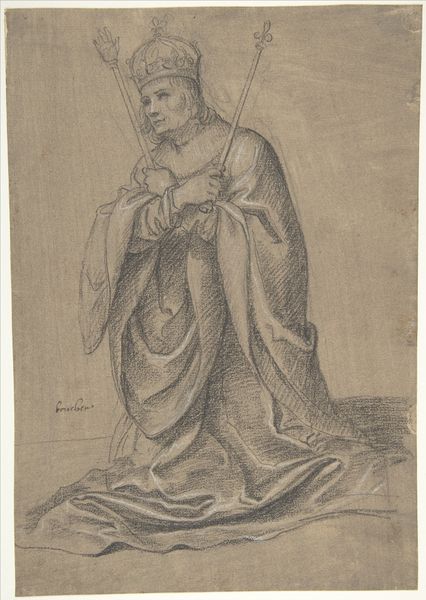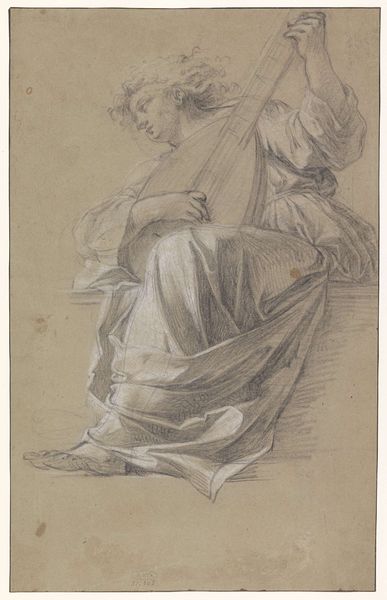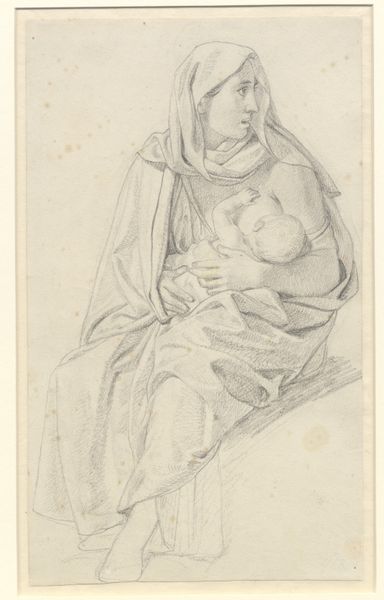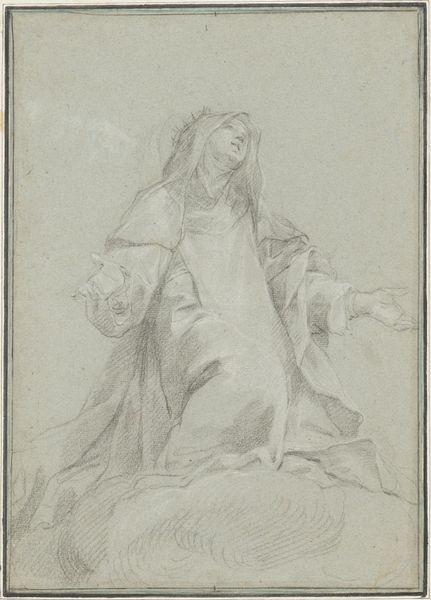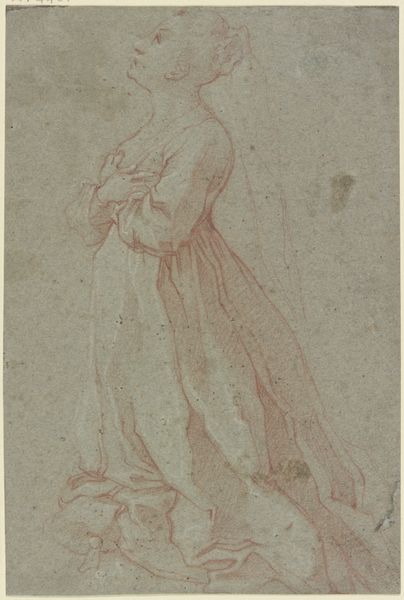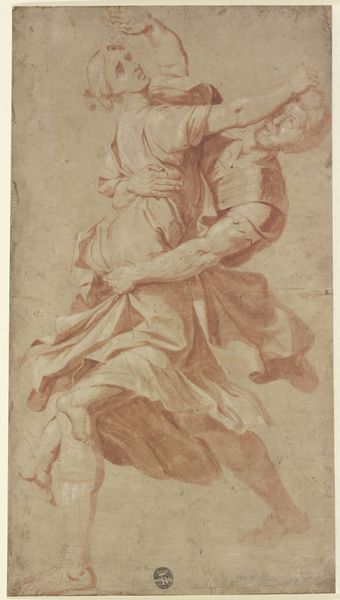
drawing, paper, pencil, chalk, charcoal
#
portrait
#
drawing
#
high-renaissance
#
charcoal drawing
#
figuration
#
paper
#
pencil drawing
#
pencil
#
chalk
#
line
#
charcoal
Copyright: Public Domain
Curator: Oh, look at this drawing – a 'Kneeling Woman' by Alessandro Casolani, housed right here at the Städel Museum. It appears to be rendered in chalk and pencil. What's your take? Editor: Stark and somber. There’s an almost haunting quality to it, isn't there? The grey chalk gives it a ghostly, ethereal feel. Her face is obscured, downcast, adding to the overall feeling of sorrow and humility. Curator: Indeed. The downward gaze, coupled with her clasped hands, signifies supplication. Throughout history, kneeling has symbolized obedience and piety. She could be praying, repenting, or simply overwhelmed by grief. Editor: Those hands are wonderfully rendered. Expressive, almost pleading. But what about her clothes? That loose garment – almost like a tunic—seems to add to the sense of vulnerability, doesn't it? Like she's stripped down to essentials, ready to bare her soul. Curator: You're right to notice the clothing. It does lend a sort of purity to the figure. We must remember that this may have been a study, maybe for a larger religious painting, something evoking repentance. That modesty is key to the artistic intent here. The artist employs line and shadow artfully here; see the subtle nuances around her face. Editor: It almost reminds me of certain depictions of Mary Magdalene—the repentant sinner. Is she veiled? I feel like I can perceive a veiled presence in this image and am drawn into some mystery, maybe of identity. What narrative layers might this contain, especially given our twenty-first-century experience? Curator: An intriguing possibility. The headdress indeed contributes to the sense of anonymity. What is more relevant to note is that the artwork emphasizes inner reflection more than specific identities. Maybe that is what draws you in? I think she invites contemplation of our relationship to a greater power and the experience of repentance in all of us. Editor: Very interesting… so rather than focusing on 'who', you emphasize 'why'. Okay, I'll grant you that. Curator: And perhaps that is Casolani’s genius – using simple tools like charcoal to elicit such complex emotions. What a drawing! Editor: Yes, a quiet power, perfectly preserved by chalk and paper. Gives one pause, doesn't it?
Comments
No comments
Be the first to comment and join the conversation on the ultimate creative platform.



